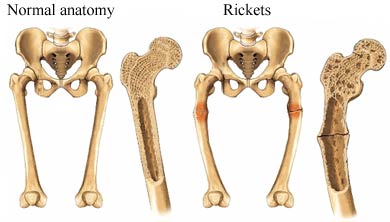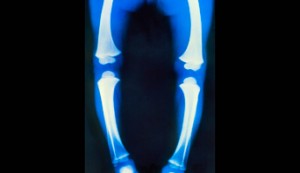 Back in May of this year (2013) Sports Illustrated printed the piece about the NBA trying to expand into the Indian market which has untapped. The piece “Wanted: 1.2 Billion Basketball Fans” had stated that the current best option is a young 7 feet tall Punjabi kid named “SATNAM SINGH BHAMARA”. His actual numbers are supposed to be…
Back in May of this year (2013) Sports Illustrated printed the piece about the NBA trying to expand into the Indian market which has untapped. The piece “Wanted: 1.2 Billion Basketball Fans” had stated that the current best option is a young 7 feet tall Punjabi kid named “SATNAM SINGH BHAMARA”. His actual numbers are supposed to be…
- Height: 7′ 1½”
- Wight: 300-pound
- Shoe Size: 20
The idea of trying to combine basketball with the culture and nation of India has been extremely seductive since the project with the NBA and basketball getting penetration into the Chinese market with Yao Ming was so successful. 10 years after Yao Ming opened the door between the market of China to basketball, people are now looking to get into the India market looking for another giant.
Many basketball and NBA executives would love to get more coverage in India but from what I see, I don’t think Satnam will be the first Indian basketball player who will play in the NBA or become even reasonable famous.
In general, the way that basketball works is that for any country to represent itself and get exposure to NBA, the first or first few players that gets drafted is a giant. The examples are many
When it comes to getting into basketball, and definitely playing professionally, the easiest attribute to have is to be tall to get recognized first.
Of all the sports in the world, only basketball and volleyball put such a huge emphasize towards height and length as absolute requirements on its professional athletes. Some other sports like football, the fighting arts, and rowing might prefer to have their athletes bigger, but not always. Of all the sports in the world today, besides the game of futbol or soccer, the biggest growing sport to take over the psyche of the developing world with its 5+ billion people would probably be basketball.
In a world that is now over 7 billion people in population, with the countries of China and India being the only two countries with a population over the 1 billion mark, the influence of the sport of basketball would be greatly expanded if the American created sport of basketball managed to reach these two major countries.
I propose that in even 20 years, the game of basketball will eclipse the game of soccer in popularity. I cite 4 primary reasons.
1. The game of soccer is resource intensive in terms of space and has many people so the team is emphasized. The game of basketball is not as resource intensive at least in terms of land required. When comparing the court size of the basketball court to say baseball, football, soccer, or hockey, the basketball court is small. Some sports like Volleyball do however have a smaller court.
2. Basketball also has the interesting feature of having only 5 players of a team at one time on the field. It means that the physical actions of any one player can be much more focused on and glorified if they perform at a much higher level. As the nations of the world in general grow richer and more well off, there will be overall less emphasize placed on the whole and teams and the individual’s accomplished will be focused on more. The individual’s achievements will be glorified more and this will make the sport of basketball, which has less people on the court, more attractive as more people in the developing world start to place more importance on the individual.
3. The game of basketball is faster (at least in terms of scoring) – In soccer, due to how big the field is, it is rare that a goal and point is scored. When a soccer player gets reasonably close to the goal, often people start to get excited but that excitement goes away because the actual point is not made due to the goalie blocking a shot or the player running towards the goal missing the shot.
In comparison, the game of basketball allows of people to score almost every second. The court is small enough that a person with enough strength and accuracy can throw a basketball from one side of the court to the other end and make a 3 point basketball. There have been instances were a 10 point lead can be reduced in less than 2 minutes of game play and teams can come out of big point deficits creating a type of drama which could be called “movie like”.
When we compare the score at the end of a game of a soccer game, it is usually something like 2-1, and sometimes when neither side scores a point in the regulation time, they have to go into kicking. With basketball, the scores of an average game between two players are around 80-100, which means that the direction of the game can change in a minute when a team that is 10 point behind can bounce back. This makes the game of basketball more exciting to watch.
4. The game of basketball focuses on humans that are much bigger in size – There is no doubt that size is something that people admire at a very visceral instinctual level. The truth is that humans have always looked for heros in their culture. When we read storied from any culture’s past, the main protagonist is almost always described as being bigger than average. Hercules, Gilgamesh, Miyamoto Musashi, Michael Jordan, etc. We secretly, unconscious want our heros to be bigger than the average person.
We as a species love the idea of heroes. It is true that at one level we might wish that the people we admire, our heroes, were just average people like us and the same size as us so that we might be able to relate to them better, but we also project from our minds the idea that our ‘heroes’ should be ‘larger than life’, and basically larger in height and stature so that we can literally ‘look up to them’.
Millions of people in the world admire and look up to Messi, who is considered the greatest soccer player today. However, I would guess that a 15 year old boy who is 5′ 8″ and manages to actually meet Messi, who is his hero face to face might be psychologically jolted and a little shocked to realize that his hero is actually shorter than him (being 5′ 7″). This might actually cause the image of the greatness of the guy to decrease in some of his fans who actually see him in real life.
This is why I think basketball will one day become larger than soccer. It is due to 4 main things…
- The size and space of the courts the game is played on is smaller.
- The individual’s accomplishments will be glorified more instead of the team, which will coincide with the overall way global society is shifting towards as people get richer.
- The game of basketball is much faster and things can change so fast in terms of who is winning. This creates drama.
- The game of basketball mainly puts larger than average humans in the game, allowing it easier for the commoner and non-athlete to turn the players into heroes.
Of course soccer is still going to create raving fans that are willing to riot, fight, and kill each other for. However, I think the overall global zeal for soccer will decrease as the decades go by. Basketball will go up in influence and popularity.
When we look at what happened to China, we see that basketball managed to completely take over the country due to the Chinese superstar basketball player Yao Ming influence. He was the one of the main reasons the NBA has been so popular in the country of over a billion people.
It might be also becasue basketball has been a part of Chinese athletics for much of its history in the last century, since Chairman Mao was very fond of the game, and even during the 1960-1970s when the Chinese Cultural Revolution was going on, when almost all other types of Western influences and ideas were suppressed and rejected by Mao and his ideology on self sufficiency, Mao still was fond of basketball and allowed this sport to continue on in the country. So another big reason why basketball managed to take over the Chinese psyche might be also because it has had a very long, undisrupted history in a country with over 1 billion people.
When we look at Yao Ming, he represents all of the reasons why I think people and nations will one day make basketball into the most popular sport in the world. His mythical size, his graceful movements, the speed of the game, and the small space that the game is played in all contributed to the game of basketball becoming so popular in China. Now, after a little more than a decade, 10 years after Yao was drafted into the NBA as the 1st round pick of the 2002 NBA Draft, he would go back to Shanghai, where he played before, and buy the team he used to play for. Yao Ming’s net worth is over 100 million USD as calculated by some sources. (source) Because of this, Yao Ming may have become the first true Chinese superstar in this century, beyond anything that other entertainers like actors, singers, and musicians can reach in terms of global popularity.
The interesting case of how basketball fever swept the country of China I am proposing will one day reach India as well, however it would not be as strong.
Now, what about India. There is a national India basketball team but why has basketball not caught on? – Would basketball one day manage to take over the indian psyche and create as loyal fans just like the other 1 billion + nation?
One of the things why it probably won’t happen, at least for a long time, is the game of Cricket. Cricket has taken over the south asian people’s psyche. For many south asians, cricket represents the absolute pinnacle of sports. People go crazy over cricket in Pakistan and India.
Just last month the New York Times wrote a piece showing just how big and passionate people are about cricket and the rivalry between Pakistan and India in the cricket world. The article was entitled “In India vs. Pakistan Cricket Match, Passions Unleashed”
I personally know absolutely nothing about cricket, so it would be a great disservice to say anything about the sport by a person who knows nothing about it. I will just talk about basketball.
So will India also one day catch the basketball bug and become basketball fanatics as much as they are crazy about cricket? I think they will, but first they have to find their own national hero to look up to. They need their own giant to cheer behind and root for. This person will be someone that they can related to but also root for.
Is there anyone in India, Pakistan, Bangladesh which has the size, speed, and skill in basketball right now to make the entire country of India turn their heads? Not yet.
Basketball is a game that requires first a lot of size. Like most countries based in the continent of Asia, the average people are not that big compared to say people who are ethnicity from Northern Europe. Only a few small regions in the country have ethnic groups of tribes where the people are big in stature. One area which seems to have produced quite a few extremely large Indians is the Punjabi region, which is the region of land that has been shared and disputed by Pakistan and India for decades.
I am sure that out of a country of billion + there a a few giants, 7 feet plus. After looking at the height and growth of both East Asians and South Asians I would say that it seems that South asians are in general slightly taller than East Asians.
However, currently the numbers don’t agree with my assessment and prediction. From the Wikipedia article on average human height based on countries,
- Average Height Of Males In India: 1.663 m (5 ft 5 1⁄2 in)
- Average Height Of Females In India: 1.526 m (5 ft 0 in)
- Average Height Of Males In China: 1.721 m (5 ft 8 in)
- Average Height Of Females In China: 1.601 m (5 ft 3 in)
Also…
- Average Height Of Males in Pakistan: Pakistan 169,3 (159196336), 167,0 (159196336)
- Average Height Of Females in Pakistan:
- Average Height Of Males in Japan: 1.707 m (5 ft 7 in)
- Average Height Of Females in Japan: 1.580 m (5 ft 2 in)
From comparing the actual numbers from Wikipedia, it actually shows that the average height of both males and females are shorter in India compared to its neighbor country China. However, I am proposing that the reason there is a 2.5 inch of height discrepancy is due to the living conditions of India. From the plight of malnutrition and vitamin deficiency that is so common in India, children develop stunted growth and end up shorter than other places.
It is not that South Asians are inheritantly shorter than their Northern neighbors, just that they are lacking the right conditions for it. According to the Wikipedia article on average GDP for different countries in the world,
- Average GDP per Capita of China: 6000+ USD per year
- Average GDP per Capita of India: 1500+ USD per year
If we then look at say Japan compared to Bangladesh or Pakistan, we see a huge difference in wealth and quality of lifestyle between these continental neighbors.
- Average GDP per capita of Bangladesh: 700- 850+ USD per year
- Average GDP per capita of Pakistan: 1200-1300+ USD per year
- Average GDP per capita of Japan: 46500+ USD year
The huge wealth difference between say Bangladesh and Japan is insane, where the GDP for Japan is around 50X.
The living cost of these south asian countries are just so low, and the people are just so much poorer. I suspect that if the people of India and Pakistan was given the type of amount of food and nutrition to reach their real height potential, it would be slightly higher than the Chinese. and If one country can produce a 7′ 6″ idiopathically giant like Yao Ming, India should be able to produce its own healthy giant which has the body suitable to play basketball.
However the question then becomes, even if a person has the natural gifts like height, arm wingspan length, jumping ability, and coordination needed to play professional basketball, would they wish to try to play professional basketball at the global level to represent their country like Yao? I am not sure since India has never been a traditionally homogenous nation unlike say China.
For most of its history, the country of India was not a complete nation. The nation is so diverse with at least a dozen official languages and each region of India has its own culture, way of living, and customs. If a person was to try to represent India as the first Indian Basketball Superstar, it would be hard. There will be people who will be very proud that he represents them as a group, but they might start to associate more over the city or section of India he comes from.
I am reminded of the curious case of Jeremy Lin, who is a 2nd generation Taiwanese American and how after he became extremely famous last year over the phenomenon known as Lin-Sanity, all types of subsect Asian communities stated that he was representing them. It did not matter how he wanted to defined himself, as asian, taiwanese, chinese, american, but that other people who admired him started to find ways to associate themselves with him, whether it was true or not.
I would rather believe that the next Asian basketball superstar is more likely to be from the Philippines than India. It seems that Yao Ming agrees with me. For a long time, the two basketball powerhouses from the Asian continent has been just the Philippines and China. From the history of the FIBA Asia Championship, it seems that the two countries of China and Philippines have won the most championships compared to their asian counterparts.
At this point, I would love to see an Indian basketball player in the NBA but I don’t think that the people of the country have the passion for basketball at this time. It is just not as attractive as cricket for this current generation. I will wait for the indian basketball player superstar.




